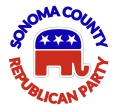Political Parties
Political Parties
A political party is a group of voters organized to support specific public policies. The aim of a political party is to elect officials who will try to carry out a party's policies.
Political parties, as current structured, did not begin to develop until the late 1600's. The Senate in ancient Rome had two groups representing people with different interests: the Patricians and the Plebeians. The Patricians represented noble families while the Plebeians represented wealthy merchants and the middle class.
After the fall of Rome (A.D. 276) the only entity that appeared to resemble political parties were the factions that supported one noble family over another. Political parties began to grow as representative assemblies came to power.
Political parties became much clearer in England when Parliament appeared to be challenging royal authority and the king retaliated by dissolving Parliament.
Depending on a person's opinion regarding the king's action the names of each side were Petitioners (wanted king to call new Parliament) or Abhorrers (wanted no control over king's actions). Eventualy, the factions took on other names. Petitioners became Whigs and Abhorrers became Tories. Tories wanted a strong king with few limiations and Whigs wanted ordinary people to have more rights and have more control over the government.
In the United States, the leaders of the American Revolution were not in favor of parties and battles over politcs. However, they did eventually form political parties.
Alexand Hamilton and others who wanted a strong central government got together and in 1787, anti-Federalists gathered with Thomas Jefferson as their leader. This group called itself Democratic-Republicans.
The Federalists believed that the government should protect the nation's infant industries. Their membership came from Norther businessmen, bankers and merchants. The Federalists hung on as a minority for about 20 years.
The Democratic-Republican Party drew followers from planters, small farmers and artisans.
These people wanted the government to leave them alone as much as possible. They wanted most of the power to be in the hands of state and local governments.
By 1820, the issue of slavery was beginning to create new alliances.
Andrew Jackson, a Democratic-Republican from Tennessee was elected president in 1828.
He changed the party's name to Democrat. Those who had been Federalists joined with anti-Jackson Democrats to form the National Republican or Whig Party.
By 1854, slavery took over the political debate. Concurrently, hte issues of slavery and states' rights divided Democrats into Northern and Southern branches. Southern Democrats were champions of slavery and states' rights.
In 1854, anti-slavery groups formed the Republican Party. In 1856, their first Presidential candidate was John C. Fremont. By 1860, there were four main parties and Abraham Lincoln was elected as the first Republican President.

